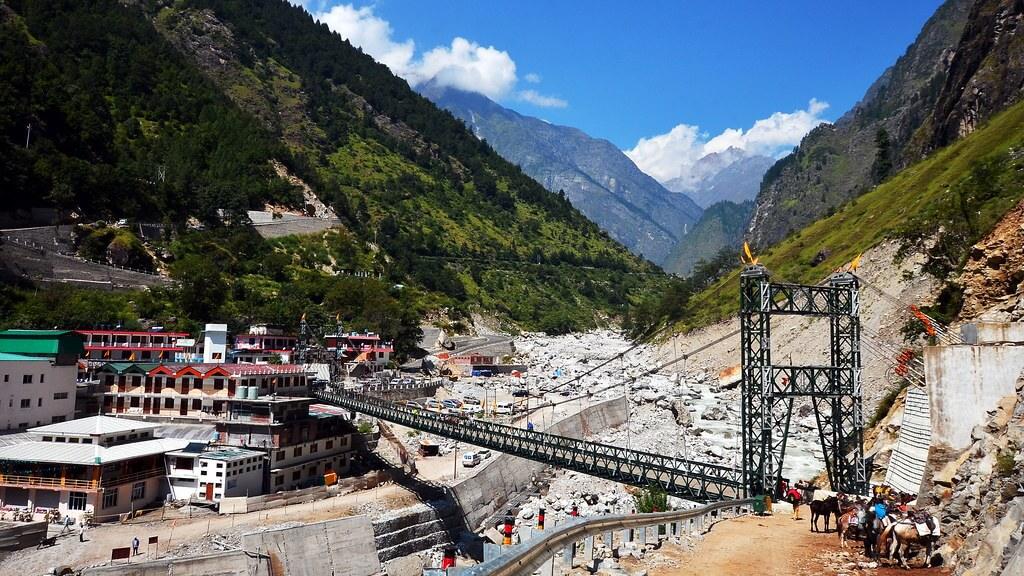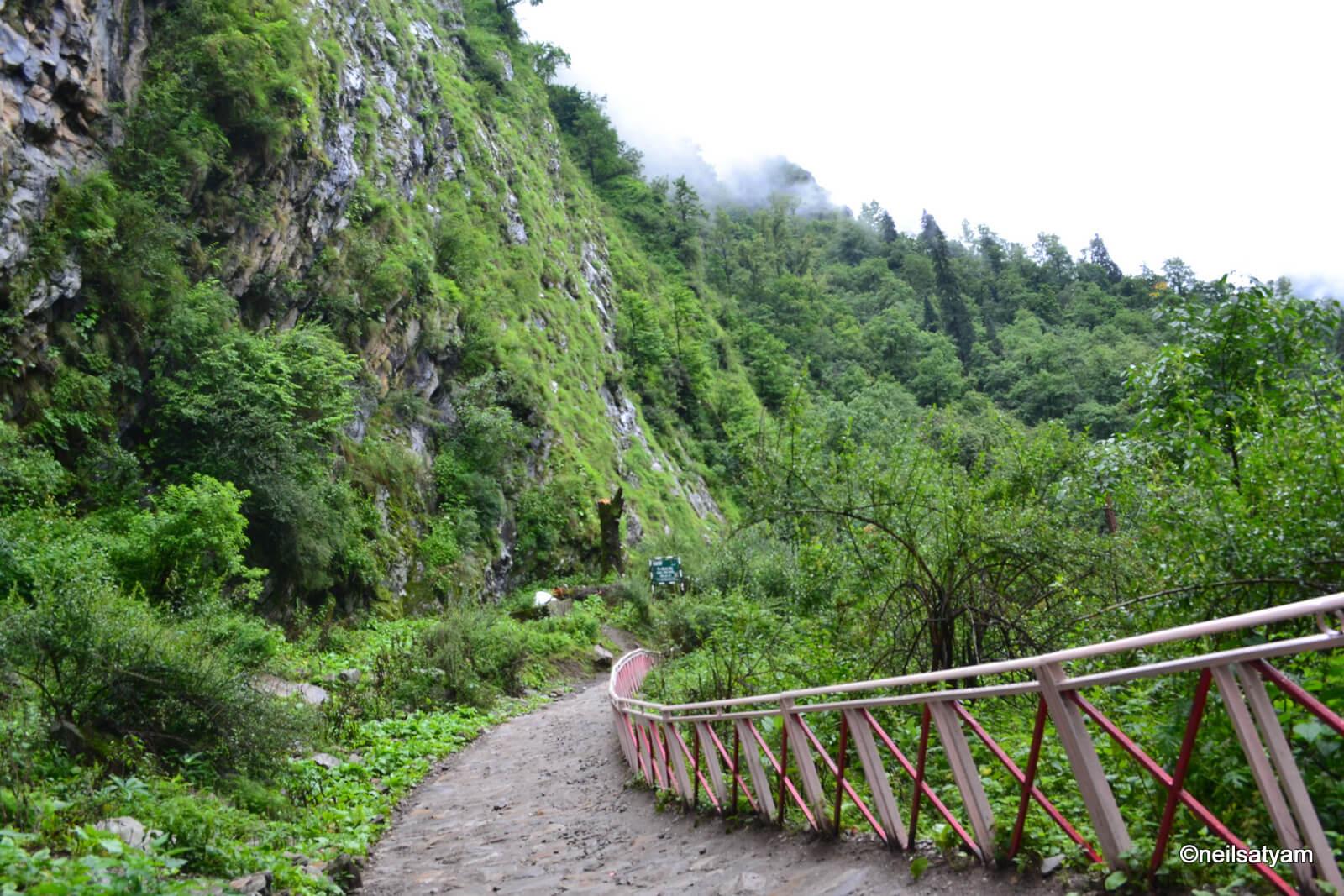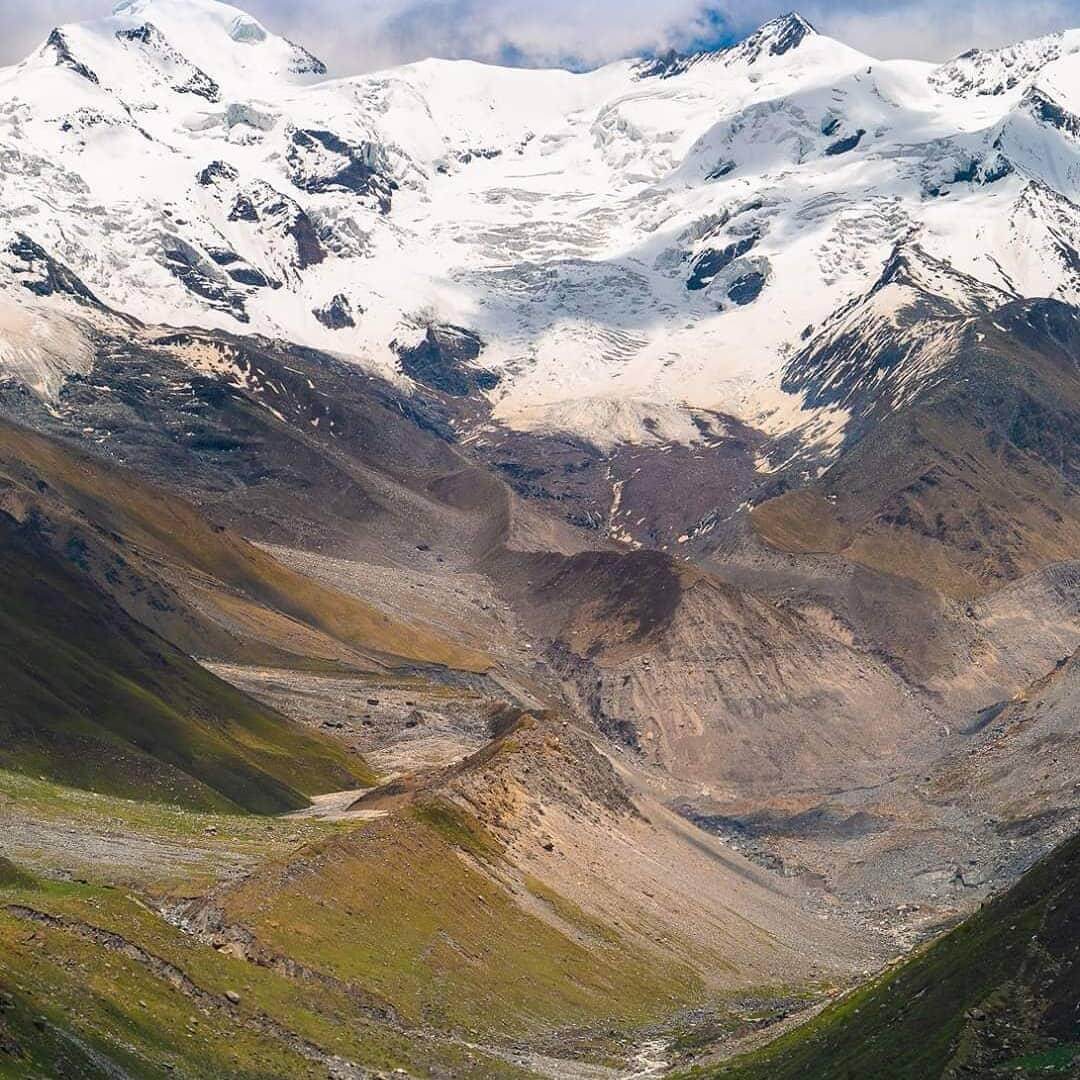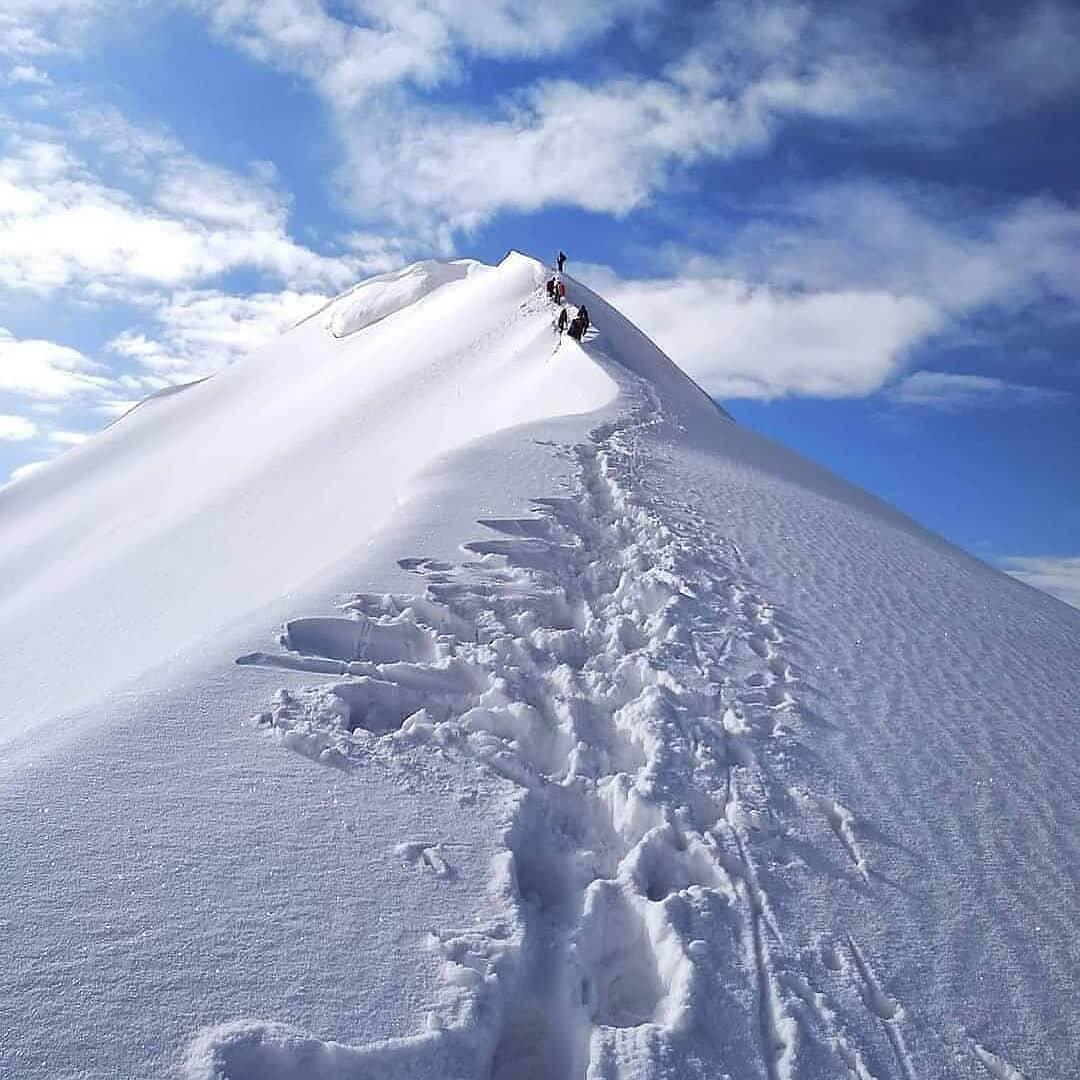India offers a plethora of breathtaking trekking destinations, especially during the summer months. Here are five top picks for summer treks in 2024:
1. Valley of Flowers Trek, Uttarakhand:
Nestled high in the Garhwal Himalayas of Uttarakhand, India, lies a pristine paradise known as the Valley of Flowers. This enchanting destination, a UNESCO World Heritage Site, beckons adventurers and nature enthusiasts with its breathtaking landscapes, vibrant flora, and serene ambiance. In this blog, we embark on a virtual journey to explore the wonders of the Valley of Flowers trek, uncovering its beauty, history, and practical tips for an unforgettable experience.
The Enigmatic Valley:
The Valley of Flowers, with its surreal beauty, remains veiled under a blanket of snow for most of the year. However, during the brief summer months from June to September, this hidden gem blossoms into a kaleidoscope of colors, showcasing a diverse array of alpine flowers. The valley stretches over 87 square kilometers, adorned with meandering streams, cascading waterfalls, and towering peaks that create a mesmerizing backdrop.
Floral Extravaganza:
One of the highlights of the Valley of Flowers trek is undoubtedly its floral diversity. Trekking through the valley reveals a captivating tapestry of wildflowers, including the famous blue poppy, brahma kamal, saxifrages, primulas, and countless other species. Each step unveils a new spectrum of colors, from vibrant reds and yellows to delicate shades of blue and purple, painting a picture-perfect landscape straight out of a fairy tale.
Rich Biodiversity:
Beyond its floral splendor, the Valley of Flowers is also home to a diverse range of fauna. Lucky trekkers might spot elusive Himalayan wildlife such as the Himalayan black bear, snow leopard, musk deer, and numerous species of birds including the Himalayan monal, cheer pheasant, and more. The valley’s unique ecosystem supports a delicate balance of life, making it a haven for nature lovers and wildlife enthusiasts alike.
Trekking Experience:
Embarking on the Valley of Flowers trek is a rewarding adventure, albeit one that requires proper planning and preparation. The journey begins from the picturesque town of Govindghat, where trekkers set out on a moderate trek that typically spans 4-6 days round trip. Along the way, they traverse rugged terrain, cross gushing rivers, and ascend to altitudes of over 4,000 meters, all while soaking in the majestic beauty of the Himalayas.
Practical Tips:
For those eager to embark on the Valley of Flowers trek, here are some practical tips to enhance your experience:
- Timing is Key: Plan your trek during the monsoon season (July to September) when the valley is in full bloom.
- Permits and Permissions: Obtain necessary permits from the Forest Department in Govindghat before starting the trek.
- Pack Wisely: Carry essential trekking gear, including sturdy hiking boots, rain gear, warm clothing, sunscreen, and a first-aid kit.
- Stay Hydrated and Energized: Bring an adequate supply of water and snacks to stay hydrated and energized during the trek.
- Respect Nature: Help preserve the pristine beauty of the valley by practicing responsible trekking and leaving no trace behind.
Conclusion:
The Valley of Flowers trek offers a rare opportunity to immerse oneself in the untamed beauty of the Himalayas and witness nature’s grandeur in all its glory. Whether you’re a seasoned trekker or a novice adventurer, this enchanting destination promises an unforgettable journey filled with awe-inspiring landscapes, colorful blooms, and a profound sense of tranquility. So pack your bags, lace up your boots, and embark on an expedition to paradise on earth.









2. Hampta Pass Trek, Himachal Pradesh:
Introduction:
Nestled amidst the rugged terrain of the Himalayas lies a trekker’s paradise known as the Hampta Pass Valley. This enchanting route, adorned with breathtaking landscapes, pristine valleys, and azure lakes, offers adventurers a journey of a lifetime. In this blog, we embark on a virtual expedition to explore the wonders of the Hampta Pass Valley trek, culminating in the serene beauty of Chandratal Lake.
Discovering the Hampta Pass Valley:
Located in the Pir Panjal range of Himachal Pradesh, the Hampta Pass Valley trek is a thrilling escapade that takes trekkers through diverse terrain, from lush green meadows to barren landscapes, offering a glimpse into the region’s rich biodiversity. The trek begins from the quaint town of Manali, where adventurers set out on a scenic drive to Jobra, the starting point of the expedition.
Traversing Varied Landscapes:
The Hampta Pass trek is renowned for its ever-changing landscapes, each more mesmerizing than the last. As trekkers ascend through the verdant valleys of Jobra and Chika, they are greeted by dense forests, gurgling streams, and panoramic vistas of snow-capped peaks. The trail gradually gives way to the rugged terrain of Balu ka Ghera, where towering cliffs and rocky outcrops dominate the landscape.
Conquering the Pass:
The highlight of the trek is undoubtedly the ascent to Hampta Pass, a high-altitude mountain pass situated at an elevation of over 4,200 meters. As trekkers navigate the steep and challenging terrain, they are rewarded with breathtaking views of the surrounding Himalayan peaks, including Indrasan and Deo Tibba. Standing atop the pass, surrounded by towering mountains and endless skies, one can’t help but feel a profound sense of achievement and awe.
Chandratal Lake: A Serene Oasis:
After conquering the pass, trekkers descend into the Lahaul Valley, where the landscape transforms once again, giving way to vast meadows and crystal-clear streams. The final leg of the journey leads to the jewel of the Hampta Pass trek – Chandratal Lake. Situated at an altitude of 4,300 meters, this pristine lake, with its shimmering blue waters and surreal surroundings, is a sight to behold. Trekkers can spend a peaceful evening by the lakeside, camping under the starlit sky and soaking in the tranquility of their surroundings.
Practical Tips for Trekkers:
For those eager to embark on the Hampta Pass Valley trek and visit Chandratal Lake, here are some practical tips to enhance your experience:
- Plan Your Trek: Choose the right time to trek, typically from June to September, when the weather is favorable and the trails are accessible.
- Pack Wisely: Carry essential trekking gear, including sturdy hiking boots, warm clothing, sleeping bag, tent, sunscreen, and a first-aid kit.
- Stay Hydrated and Energized: Bring an adequate supply of water and energy-rich snacks to stay hydrated and fueled during the trek.
- Acclimatize Properly: Take time to acclimatize to the high altitude, especially before ascending to Hampta Pass.
- Respect Nature: Practice responsible trekking and leave no trace behind to preserve the pristine beauty of the Himalayas.
Conclusion:
The Hampta Pass Valley trek, culminating in the serene beauty of Chandratal Lake, offers adventurers an opportunity to connect with nature in its purest form. Whether you’re a seasoned trekker or a novice explorer, this expedition promises an unforgettable journey filled with awe-inspiring landscapes, challenging terrain, and moments of tranquility that will stay with you long after the trek is over. So pack your bags, lace up your boots, and embark on an adventure of a lifetime through the heart of the Himalayas.










3. The Beas Kund Trek:
Nestled in the lap of the majestic Himalayas, the Beas Kund Trek stands as a testament to the unparalleled beauty and grandeur of nature. This iconic trek, named after the sacred Beas Kund lake, offers adventurers a thrilling journey through lush meadows, pristine forests, and snow-clad peaks. In this blog, we embark on a virtual expedition to unravel the charm and allure of the Beas Kund Trek.
Discovering the Trail:
Located in the picturesque Kullu Valley of Himachal Pradesh, the Beas Kund Trek is a popular choice among trekkers seeking to explore the splendor of the Himalayas. The journey begins from the quaint town of Solang Nallah, where trekkers are greeted by panoramic views of the surrounding mountains. As they traverse the scenic trail, they are enveloped by the tranquil beauty of the Solang Valley, with its verdant meadows and gurgling streams.
Ascending to Serenity:
The trek to Beas Kund unfolds gradually, allowing trekkers to immerse themselves in the natural beauty of the region. As they ascend through the lush forests of oak and pine, they encounter a diverse array of flora and fauna, including Himalayan birds and occasional wildlife. The trail meanders along the banks of the Beas River, offering glimpses of cascading waterfalls and snow-capped peaks that loom in the distance.
Reaching the Sacred Lake:
The highlight of the Beas Kund Trek is undoubtedly the pristine alpine lake of Beas Kund, nestled at an altitude of over 3,800 meters above sea level. According to Hindu mythology, this serene lake is believed to be the source of the mighty Beas River, making it a sacred pilgrimage site. Surrounded by towering mountains and snowfields, Beas Kund exudes an aura of tranquility and spirituality, offering trekkers a moment of solace amidst the rugged wilderness.
Breathtaking Views:
From the shores of Beas Kund, trekkers are treated to panoramic views of the surrounding Himalayan peaks, including Hanuman Tibba, Friendship Peak, and Shitidhar. The stark contrast between the azure waters of the lake and the snow-clad summits creates a mesmerizing tableau that leaves a lasting impression on all who behold it. Trekkers can spend a peaceful moment by the lake, soaking in the serenity of their surroundings and reflecting on the beauty of nature.
Practical Tips for Trekkers:
For those eager to embark on the Beas Kund Trek, here are some practical tips to enhance your experience:
- Plan Your Trek: Choose the right time to trek, typically from May to October, when the weather is favorable and the trails are accessible.
- Pack Wisely: Carry essential trekking gear, including sturdy hiking boots, warm clothing, rain gear, sunscreen, and a first-aid kit.
- Stay Hydrated and Energized: Bring an adequate supply of water and energy-rich snacks to stay hydrated and fueled during the trek.
- Acclimatize Properly: Take time to acclimatize to the high altitude, especially before ascending to Beas Kund.
- Respect Nature: Practice responsible trekking and leave no trace behind to preserve the pristine beauty of the Himalayas.
Conclusion:
The Beas Kund Trek offers adventurers an opportunity to immerse themselves in the untamed beauty of the Himalayas and connect with nature on a profound level. Whether you’re a seasoned trekker or a novice explorer, this expedition promises an unforgettable journey filled with breathtaking landscapes, serene lakes, and moments of introspection that will stay with you long after the trek is over. So pack your bags, lace up your boots, and embark on an adventure of a lifetime to the enchanting realm of Beas Kund.














4. The Bali Pass Trek
Introduction:
Nestled in the heart of the Garhwal Himalayas, the Bali Pass Trek stands as a testament to the raw, untamed beauty of the mountains. This challenging expedition takes trekkers through rugged terrain, pristine alpine meadows, and towering glaciers, offering a glimpse into the majestic grandeur of the Himalayan landscape. In this blog, we embark on a virtual journey to unravel the allure and adventure of the Bali Pass Trek.
Embarking on the Expedition:
The Bali Pass Trek begins in the quaint town of Sankri, nestled in the picturesque Har Ki Dun Valley of Uttarakhand, India. From here, trekkers set out on a thrilling adventure that spans over several days, navigating through remote villages, dense forests, and high-altitude passes. The journey promises breathtaking vistas at every turn, with panoramic views of snow-capped peaks and cascading waterfalls.
Ascending to Heights:
As trekkers ascend along the trail, they are greeted by a diverse array of flora and fauna, including rhododendron forests, alpine flowers, and Himalayan wildlife. The route meanders through charming villages like Taluka and Osla, where trekkers can experience the rich culture and hospitality of the local Garhwali people. As they continue their ascent, the landscape transforms into barren, rocky terrain, challenging trekkers both physically and mentally.
Conquering Bali Pass:
The highlight of the trek is undoubtedly the ascent to Bali Pass, a high-altitude mountain pass situated at an elevation of over 4,900 meters above sea level. The climb to the pass is steep and arduous, requiring stamina, determination, and a spirit of adventure. However, the effort is rewarded with unparalleled views of the surrounding peaks, including Swargarohini, Bandarpoonch, and Kalanag, stretching as far as the eye can see.
Descending into Wonderland:
After conquering the pass, trekkers descend into the surreal beauty of the Yamunotri Valley, where lush meadows, gurgling streams, and emerald lakes await. The final leg of the journey leads to the sacred Yamunotri Temple, where trekkers can pay homage to the source of the Yamuna River before concluding their epic adventure.
Practical Tips for Trekkers:
For those eager to embark on the Bali Pass Trek, here are some practical tips to enhance your experience:
- Plan Your Trek: Choose the right time to trek, typically from May to October, when the weather is favorable and the trails are accessible.
- Pack Wisely: Carry essential trekking gear, including sturdy hiking boots, warm clothing, rain gear, sunscreen, and a first-aid kit.
- Stay Hydrated and Energized: Bring an adequate supply of water and energy-rich snacks to stay hydrated and fueled during the trek.
- Acclimatize Properly: Take time to acclimatize to the high altitude, especially before ascending to Bali Pass.
- Respect Nature: Practice responsible trekking and leave no trace behind to preserve the pristine beauty of the Himalayas.
Conclusion:
The Bali Pass Trek offers adventurers an opportunity to push their limits, connect with nature, and experience the raw, untamed beauty of the Himalayas. Whether you’re a seasoned trekker or a novice explorer, this expedition promises an unforgettable journey filled with challenges, triumphs, and moments of awe-inspiring beauty that will stay with you long after the trek is over. So pack your bags, lace up your boots, and embark on an adventure of a lifetime to the majestic heights of the Bali Pass.














5. Kashmir Great Lakes
Introduction:
Nestled in the pristine beauty of the Kashmir Valley lies a trekker’s paradise known as the Kashmir Great Lakes trek. This breathtaking expedition takes adventurers through a kaleidoscope of landscapes, from lush meadows to crystal-clear alpine lakes, offering a glimpse into the untouched splendor of the Himalayas. In this blog, we embark on a virtual journey to uncover the wonders of the Kashmir Great Lakes trek.
Embarking on the Expedition:
The Kashmir Great Lakes trek typically begins in the picturesque town of Sonamarg, situated in the heart of the Kashmir Valley. From here, trekkers set out on a mesmerizing adventure that spans over several days, traversing through remote villages, dense forests, and high-altitude passes. The trail promises captivating vistas at every turn, with panoramic views of snow-capped peaks, cascading waterfalls, and blooming alpine flowers.
Traversing the Lakes:
One of the highlights of the trek is undoubtedly the series of stunning alpine lakes that dot the landscape along the route. Each lake boasts its own unique charm and allure, from the serene shores of Vishansar and Krishansar to the emerald waters of Gangbal and Nundkol. Trekkers have the opportunity to camp by the lakeside, immersing themselves in the tranquil beauty of their surroundings and witnessing breathtaking sunrises and sunsets against the backdrop of towering mountains.
Encountering Wildlife and Flora:
As trekkers ascend through the pristine wilderness of the Kashmir Valley, they are greeted by a rich variety of flora and fauna. The region is home to a diverse array of wildlife, including Himalayan marmots, ibex, and even the elusive snow leopard. The trail meanders through verdant meadows adorned with colorful wildflowers, creating a picturesque tableau that is as enchanting as it is serene.
Ascending to Passes:
The Kashmir Great Lakes trek presents trekkers with the opportunity to conquer several high-altitude passes, including the Gadsar Pass and the Zoji La Pass. These challenging ascents offer unparalleled views of the surrounding landscape, with panoramic vistas of snow-clad peaks and deep valleys stretching as far as the eye can see. Standing atop these passes, trekkers are filled with a sense of awe and accomplishment, knowing that they have conquered some of the most formidable terrain in the Himalayas.
Practical Tips for Trekkers:
For those eager to embark on the Kashmir Great Lakes trek, here are some practical tips to enhance your experience:
- Plan Your Trek: Choose the right time to trek, typically from July to September, when the weather is favorable and the trails are accessible.
- Pack Wisely: Carry essential trekking gear, including sturdy hiking boots, warm clothing, rain gear, sunscreen, and a first-aid kit.
- Stay Hydrated and Energized: Bring an adequate supply of water and energy-rich snacks to stay hydrated and fueled during the trek.
- Acclimatize Properly: Take time to acclimatize to the high altitude, especially before ascending to passes.
- Respect Nature: Practice responsible trekking and leave no trace behind to preserve the pristine beauty of the Kashmir Valley.
Conclusion:
The Kashmir Great Lakes trek offers adventurers an opportunity to immerse themselves in the untouched beauty of the Himalayas and connect with nature on a profound level. Whether you’re a seasoned trekker or a novice explorer, this expedition promises an unforgettable journey filled with breathtaking landscapes, serene lakes, and moments of introspection that will stay with you long after the trek is over. So pack your bags, lace up your boots, and embark on an adventure of a lifetime to the enchanted realm of the Kashmir Great Lakes.














These treks offer a perfect blend of natural beauty, adventure, and serenity, making them ideal destinations for summer trekking enthusiasts in 2024.

